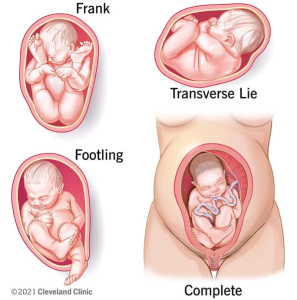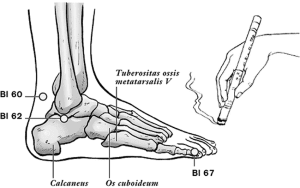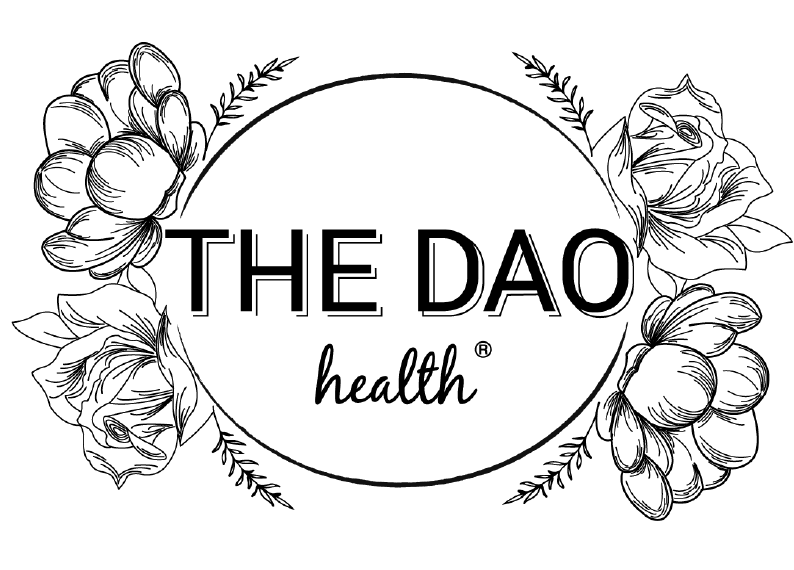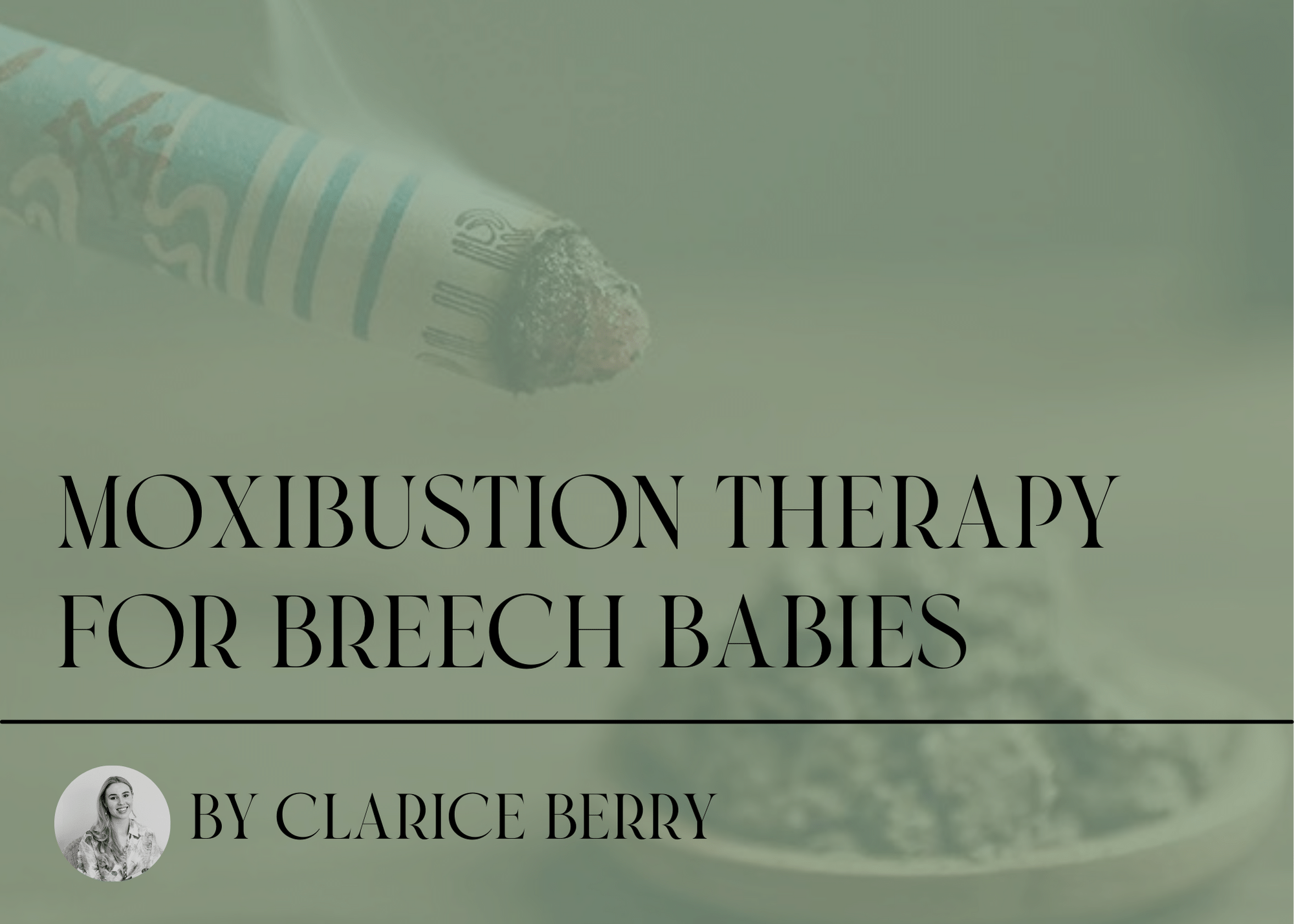The Dao Does…What is Moxibustion Therapy for Breech Babies?
Traditional Chinese Medicine has long implemented the therapies of Acupuncture and Moxibustion to support a woman during her pregnancy and in preparation for labour and birth; this includes assisting the rotation of babies that are “breech” and optimising their position for a smooth and efficient vaginal birth.
It is not uncommon to see the integration of western and eastern medicine in obstetrics and birthing units in China and a powerful eastern heat therapy known as “breech moxibustion” is often implemented as the first line of treatment for mispositioned babies before other methods of manual rotation are attempted such as ECV (External Cephalic Version). Read on to understand a little overview of breech presentation and the effects of applying ‘breech-moxibustion’ in late-term pregnancy.
Disclaimer: Please ensure you speak to a qualified Chinese medicine practitioner before attempting any of the techniques discussed in this blog post to ensure the techniques are correctly applied and are indicated for your personal case.
Approximately 3-4% of pregnancies will be breech at full term. Breech presentation refers to the baby presenting for delivery with its buttock or feet pointing downwards towards the cervix, rather than the preferred method of delivery where the baby’s head is pointed downwards; also known as (cephalic presentation).
25% of pregnancies will appear to be breech at 28 weeks of gestation or less, however, this rate usually drops to 3-4% by full-term. Some research has also suggested that the reoccurrence rate of breech presentation increases in subsequent pregnancies following one previous breech delivery; an increase of approximately 10% in a woman’s second pregnancy and an increase of 27% in a woman’s third pregnancy.
Types of Breech Presentations
 Frank Breech: In this position, the baby’s buttocks are aimed downwards at the cervix opening, with its legs pointed upwards towards its head.
Frank Breech: In this position, the baby’s buttocks are aimed downwards at the cervix opening, with its legs pointed upwards towards its head.
Complete Breech: This position is where the baby’s buttocks are pointed downwards, with the knees and hips flexed.
Footling Breech: This is where one or both baby’s feet point down towards the cervix opening and will be delivered first before the rest of the body.
Transverse Lie: This form of breech position is where the baby lies horizontally across the uterus, typically the shoulder is the first to enter the vaginal canal in breech delivery.
Changes in Birth Plan, ECV & Breech Delivery
In most circumstances, if a woman presents to their obstetrician, or midwife at 36 weeks with a baby that is breech, her birthing plan is unfortunately likely to change if she had hoped for a vaginal delivery. For most women whose pregnancy is low risk, their healthcare provider may recommend she try to encourage her baby to turn at home by performing certain exercises and manoeuvres. A fabulous method often referred to in practice is ‘Spinning Babies’ created by a midwife, Gail Tully, you can find her website here. (Please ensure to check with your healthcare provider before performing any of these techniques at home).
Some specialised obstetric units will offer a technique called an external cephalic version; also known as an ECV; usually offered at 37 weeks of gestation. During an ECV attempts will be made to manually rotate the baby into cephalic positioning by applying external pressure to the woman’s abdomen. There are some associated risks when performing this technique and it is not possible in some high-risk pregnancies, however, this technique can be very effective when other methods have failed to rotate a stubborn baby.
If a woman’s baby doesn’t manoeuvre into a cephalic position by full term her OB is likely to book a planned c-section as the safest method of delivery.
Some trained obstetricians and midwives are confident to perform a breech vaginal delivery and it’s important that this option is further investigated if a woman strongly desires a vaginal delivery. In Sydney, the Breech Clinic at Westmead Hospital offers breech services, as does The Royal Women’s Hospital and John Hunter Hospital.
Breech Moxibustion & Acupuncture Treatment
‘Breech-moxibustion’ therapy and acupuncture treatment are most effective at assisting the rotation of breech babies when implemented at 34 weeks of gestation. At 34 weeks the size of the baby is generally small enough and has more room to manoeuvre itself into a head-down position however, ‘breech-moxibustion’ therapy can commence at any stage after 34 weeks and as soon as a woman is informed of her baby’s malposition. Breech-moxibustion involves the burning of a herb called Mugwort 艾叶 or (ài yè) in pin yin and its distant application to a unique acupuncture point adjacent to the nail on the 5th metatarsal.
In Chinese medicine, moxibustion or moxa is a method used to warm the channels, nourish the blood and yang qi and strengthen the function of the acupuncture points it is applied. Moxibustion can come in many forms such as loose leaves, rolled into cigar-like cylinders, placed on the end of needles, or produced in a ‘smokeless-charcoal’ form which is safe for indoor use in a well-ventilated area.
According to traditional diagnosis, a baby that is breech is said to be due to an imbalance of the mother’s Kidney and Bladder meridians, thus the technique is applied to the acupuncture point Bladder 67 (Zhi Yin) its translation means “reaching yin”, which is a very fitting name, as this is the last point of the Bladder meridian and where it meets its “Yin” partnered channel of the Kidney; known as Foot-Shaoyin in Chinese Medicine.

Zhi Yin is known to stimulate foetal activity and turn the baby into a cephalic position. Many women will report an increase in their baby’s movement during and/or after moxibustion treatment.
How to Apply ‘Breech Moxibustion’
The application of breech-moxa’ is to be conducted over a 10-day period at home by the woman, the woman’s partner, or her support person. The moxibustion stick is held 1-3cm above the acupuncture point (BL67) on both sides of the body for approximately 10-15 minutes on each side. Breech moxibustion must continue for the full 10 days even if the woman’s baby has turned before finishing the course of treatment.
More detailed instructions on how to apply moxibustion therapy should be provided by a qualified Chinese medicine practitioner who has a focus on supporting women during their pregnancy and labour; please do not attempt this technique without further counseling to ensure it is appropriate and safe to apply during your pregnancy.
What Does the Research Say?
Several early studies have investigated the effectiveness of moxibustion treatment on breech position and have found the following.
A 2008 Systematic Review by Van den Berg I, et. Al observed “The effectiveness of acupuncture type interventions versus expectant management to correct breech presentation”. The systematic review included 6 RCTs and 3 control cohort studies that looked at acupuncture intervention at BL67 (Zhi Yin) compared with expectant management and found that the pooled portion of breech presentation was 34% following acupuncture treatment compared to 66% in the control group and suggested that acupuncture-type intervention is more effective in correcting breech position compared to expectant management.
Another 2004, Randomised Control Trial by Neri I, et. al, looked at “Acupuncture plus moxibustion to resolve breech presentation” 240 women at 33-35 weeks of gestation with a baby in breech presentation were randomized to receive acupuncture plus moxibustion or to be assigned to the control group. Bilateral acupuncture plus moxibustion was applied at the BL67 acupoint (Zhiyin). At delivery the proportion of head-down position was lower in the control group (36.7%), than in the treatment group (53.6%), indicating that acupuncture and moxibustion were more effective at turning breech babies than the control group.
Another prospective study conducted in 2003 published in ‘Foetal Diagnosis and Therapy’ assessed the effectiveness of acupuncture in turning breech presentation. The study included 67 pregnant women with breech presentations; 33 women were assigned to the control/no-intervention group and 34 women were treated with manual acupuncture at Zhi Yin for 30 minutes a day, from 34 weeks of pregnancy. The acupuncture treatment group had a success rate of 76.4% for the cephalic version and spontaneous conversion occurred in the control group at 45.4%.
The mechanisms behind how moxibustion treatment encourages babies to turn into cephalic positions are postulated to be due to an increase in placental estrogens and changes in prostaglandin levels which enhances uterine myometrial sensitivity and contractility, this is thought to increase foetal heart rate and foetal activity (Maciocia, 2011). Further research is warranted in this field, however, sometimes the mystery of eastern medicine can be left alone and stand in its own power.
Please get in contact with The Dao Health if you would like to book your Labour Preparation appointments, and/or if you are informed your baby is in a Breech position.
By Clarice Berry ~
References:
https://www.ncbi.nlm.nih.gov/books/NBK448063/
https://pubmed.ncbi.nlm.nih.gov/18514911/
https://pubmed.ncbi.nlm.nih.gov/15280133/
https://pubmed.ncbi.nlm.nih.gov/14564112/

